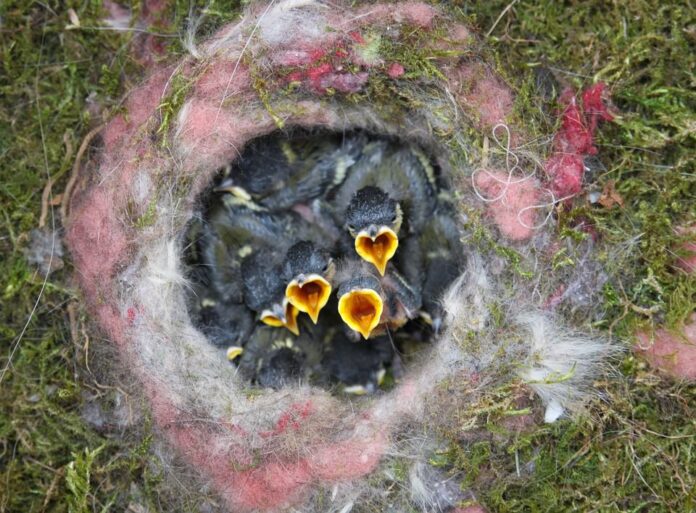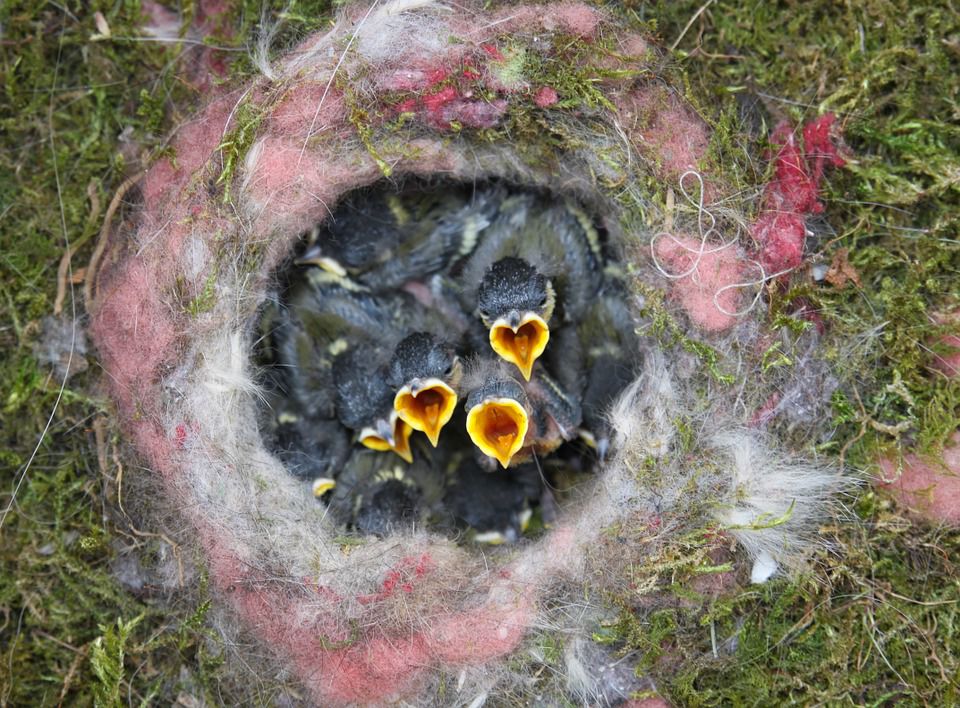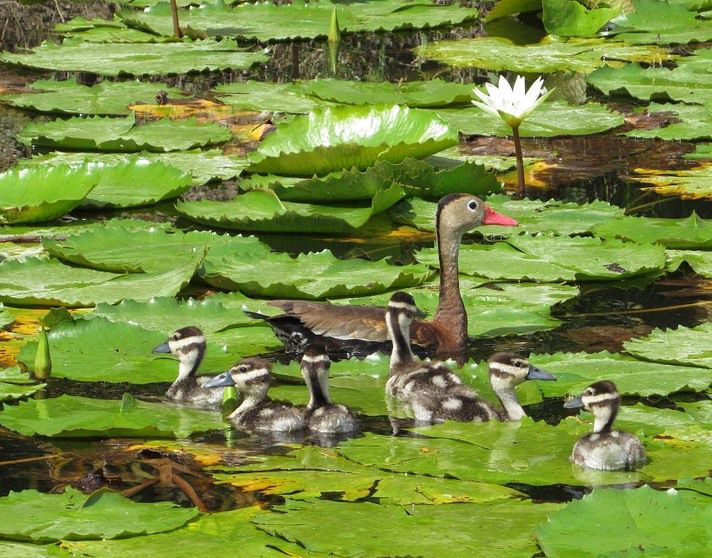BY JON BRUSH
When we think of baby birds, a variety of images may come to mind. Probably the most common image is of two to four nestlings in a cup nest, either quietly waiting for food or with mouths agape as a parent arrives. Maybe those who are familiar with raising chickens think of the downy feathered chicks running around the yard. However, there are quite a variety of baby bird types, each one fine-tuned to the lifestyle of the bird.
There are two major groups of baby birds: altricial and precocial. However, there is a continuum of types between the two (and even one beyond, but more on that in a bit). We’ll start with the main two classifications and then explore the in-betweens.
Altricial birds are those that are born naked and blind, and rely entirely on their parents for care. All songbirds are altricial. Because of this dependency and lack of mobility, parents of altricial young want to get them out of the nest as quickly as possible (where the risk of predation is high). For quick growth, many songbirds rely on insect prey for their young (due to high protein content). The faster you can bring food, the faster the baby will develop, resulting in a greater chance for survival.
Precocial birds, on the other hand, are born with a downy coat of feathers and are quickly able to walk and find their own food (although parents will help them find and learn foods). Because they need to be more developed at hatching, they often spend more time in the egg (longer incubation period) and have a larger yolk content than altricial bird eggs. A great example of a local precocial bird is the Plain Chachalaca, whose chicks leave the nest within a couple hours of hatching. Here at Quinta Mazatlan, I have gotten to witness a parent chachalaca place the yellow esperanza flowers before its two chicks. Please join me at 8:30 a.m. Saturdays for a Songbird Stroll at Quinta Mazatlan and learn more about birds and their young ones.
While those are the two major distinctions, many birds fall somewhere in-between the two. Semialtricial birds are those that are born with a downy coat, but despite being physically able to leave the nest will stay and be fed and brooded by the parents. Herons and hawks are examples of this type of development.
Semiprecocial birds are similar in many respects to semialtricial ones, but have more mobility and are capable of self-thermoregulation. Gulls and terns fall into this category. One interesting example is that of the Common Pauraque, whose young hatch with down and are able to hop away from the nest site within a couple days, yet still rely on parents for brooding and food.
There are some birds that hatch and are completely independent from their parents. The megapodes (also called moundbuilders) of Australasia build massive mounds of compost and sand to incubate their eggs; when the young hatch they are able to completely fend for themselves. These, along with the Black-headed Duck of South America, are labeled “superprecocial.”
It’s interesting to think about the many types of baby birds, and the pros and cons of each. Precocial birds invest more energy into their eggs and the young are born well-developed. Altricial birds require less initial investment, but require more parental care after hatching. These trade-offs are great for us, because we get yet another fascinating aspect of bird life to learn.
John Brush is an urban ecologist at Quinta Mazatlan in McAllen.







